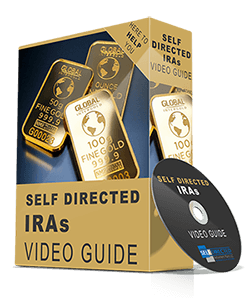Are you deprived of an employer-sponsored retirement plan? Or do you have insufficient resources to empower your employees with post-retirement financial security? Unfortunately, many Americans don’t have access to an employer-sponsored retirement plan. It can become a primary reason for them not being financially prepared for retirement.
But there is a solution! You can save for retirement at work with a payroll deduction IRA. Also, if you have employees for whom you are not able to provide a retirement plan, you can always assist them with this plan. So, do you want to know more about this wonderful tool for securing your finances and how it works? Well, hop on!
What Is the Payroll Deduction IRA?
Payroll Deduction IRAs are essentially individual retirement accounts that the employer does not sponsor. Employees can set up automatic IRA contributions from their paycheques. You may even specify a cash amount or percentage to transfer into your retirement account each time you receive your salary.
A payroll deduction IRA allows you to fund a Traditional or Roth IRA. These IRAs, like other personal retirement accounts, provide a variety of low-cost investment opportunities.
How Do Payroll Deduction IRAs Work?
So, let’s discuss how payroll deduction IRAs work! First and foremost, you must establish a relationship with a financial institution. After that, you can choose whether to open a traditional or Roth IRA payroll deduction. The significant difference between these two options is the taxes that are applied.
Taxes are paid when you withdraw money from a traditional IRA. On the contrary, taxes are deducted before you contribute to a Roth IRA and are not charged upon withdrawal.
Once everything is in place, it’s time to activate automated paycheque deductions! You may pick a percentage of your income or just specify a monetary amount that is deducted each pay period. You can also choose fixed-dollar amounts depending on contribution limitations.
What is the Payroll Deduction IRA Contribution Limit?
What’s intriguing is that payroll deduction IRAs have the same contribution limitations as regular and Roth IRAs! That is, in 2021 and 2022, you were looking at an annual maximum of $6,000. If you are 50 or older, you were eligible for a $1,000 catch-up contribution. In 2023, it gets hiked to $6,500, or $7,500 if you are over 50.
In 2024, the contribution limitations without any catch-up increased even higher, reaching a stunning $7,000! For 2025, the contribution limits remain the same as 2024, at $7,000 for those under age 50 and $8,000 for those age 50 or older. However, bear in mind that this yearly restriction applies to all of your IRA accounts, not just the ones with payroll deductions.
Notably, relying on a single IRA alone might not cut it for comfy retirement savings. Your best bet is spreading those hard-earned dollars across multiple accounts.
Looking to make the most of your retirement savings? Check out our latest article on IRA contribution limits and deadlines for 2024 and 2025. Don’t miss out – plan smarter for your future today!
What are the Tax Benefits of Payroll Deduction IRA?
Employees who set up a payroll deduction IRA can take advantage of the tax benefits. Here’s a summary of what you stand to gain:
- Traditional IRAs: They allow you to make contributions before taxes. This implies that income taxes are paid when the money is withdrawn, including any gains, rather than when it is first invested.
- Roth IRA: Roth contributions are made using already taxed money. So they are not taxed again when employees withdraw them. Furthermore, qualifying distributions allow you to enjoy your earnings tax-free and penalty-free!
What are the Distribution Rules of Payroll Deduction IRA?
Let’s go over the regulations for withdrawing money from a payroll deduction IRA.
- Traditional IRAs allow for penalty-free withdrawals at age 59½. If you remove it before that age, there is typically a 10% early withdrawal penalty unless specific restrictions apply.
- With a Roth IRA, however, things are different. You may withdraw the cash you put in whenever you wish without paying taxes or penalties. However, suppose you want to withdraw your investment gains. In that case, you may be able to do so without paying taxes or penalties if specific requirements are satisfied.
What are the Advantages of a Payroll Deduction IRA?
Payroll deduction IRAs provide several advantages for both companies and employees. First, let’s discuss the benefits:
- No Government Filings are Required: Forget the paperwork burden! Payroll deduction IRAs eliminate the requirement for federal filings, saving time and labor.
- Low Costs: Payroll deduction IRAs allow you to save on fees. They often have modest expenses. This feature makes them an affordable alternative for both companies and employees.
- Simplicity: Creating and managing payroll deduction IRA is a breeze. It’s as simple as it gets!
What are the Disadvantages of Payroll Deduction IRA?
Now, let’s consider the drawbacks of payroll deduction IRAs:
- No Loan Facility: Unlike 401ks, payroll deduction IRAs do not allow employees to take out loans from their funds.
- Minimal Savings: While this is a valuable perk, there are limitations to how much employees may save utilizing this strategy.
- No Deductions: Businesses will not receive a tax deduction for donations to these IRAs, so bear this in mind.
How Can You Help Your Employer Set Up a Payroll Deduction IRA?
Here are some steps you can take to guide your employer in setting up a payroll deduction IRA:
- First, consult with HR or the business owner. Companies are not usually aware of payroll deduction IRAs, and they may assume they are too expensive. You can explain how these IRAs work, highlighting their low cost and administrative requirements.
- Propose a list of eligible IRA providers for your organization to engage with. Look for providers who have minimal or no trading costs.
- Once your firm connects with your preferred IRA provider, you must sign a paper authorizing the transfer of cash from each paycheque to your IRA. Consider contributing around 15% of your paycheque if practical.
- A payroll withdrawal IRA allows for flexible spending of retirement money, making it ideal for regular investment and upkeep. Just be careful not to go over $7,000 every year (or $8,000 if over 50).
How Can You Set Up Payroll Deduction IRAs for Your Employees?
Setting up payroll deduction IRAs for your employees is a simple process. Here’s what you need to do:
- Create a partnership with a bank or brokerage to provide IRAs for your workers. You can pick one provider or designate multiple IRA providers to offer options.
- Allow your employees to pick how much they wish to contribute and then agree on monthly payroll deductions of that amount or percentage.
- Once they have authorized the deduction amounts, you can begin controlling their payroll deduction IRAs.
- Keep in mind that payroll deduction IRAs can be canceled at any time if you determine it is required. Nonetheless, informing all parties ahead of time is a crucial step, regardless of the activities taken to finalize this choice!
Do you want to learn more about payroll deduction IRAs and how they work?
Contact us at SD Retirement for Experienced Advice and Consultation!
Need assistance organizing your finances?
FAQs
Can I withdraw money from my payroll deduction IRA before retirement?
Absolutely! With a payroll deduction IRA, you can make penalty-free withdrawals for qualified expenses like a first-time home purchase, higher education expenses, or medical expenses.
Who is eligible for participation in a payroll deduction IRA?
Any individual who earns taxable income, regardless of age, can participate in a payroll deduction IRA. This includes those with a traditional job, as well as self-employed individuals.
What is the annual contribution limit to a payroll deduction IRA?
For 2021 and 2022, the annual contribution maximum for a payroll deduction IRA is $6,000 for people under 50 and $7,000 for those 50 and over. These restrictions are subject to vary based on the IRS’s yearly cost of living adjustments.
If you are 50 or older, you may qualify for a $1,000 catch-up contribution. In 2023, it will rise to $6,500, or $7,500 if you are over 50. Contribution limits climbed even further in 2024, reaching $7,000 or $8,000 if you are over 50!
For 2025, the contribution limit remains the same as 2024, at $7,000 for those under age 50 and $8,000 for those age 50 or older.
Do payroll deduction IRAs classify as employer-sponsored retirement plans?
Payroll deduction IRAs are not eligible retirement plans since they are set up individually by employees rather than employers. This characteristic sets them apart from standard employer-sponsored retirement plans, such as 401ks.
Got More Questions?



